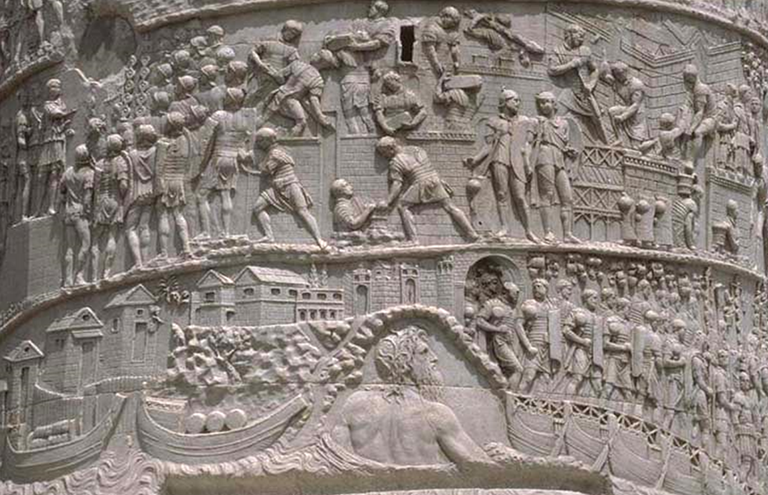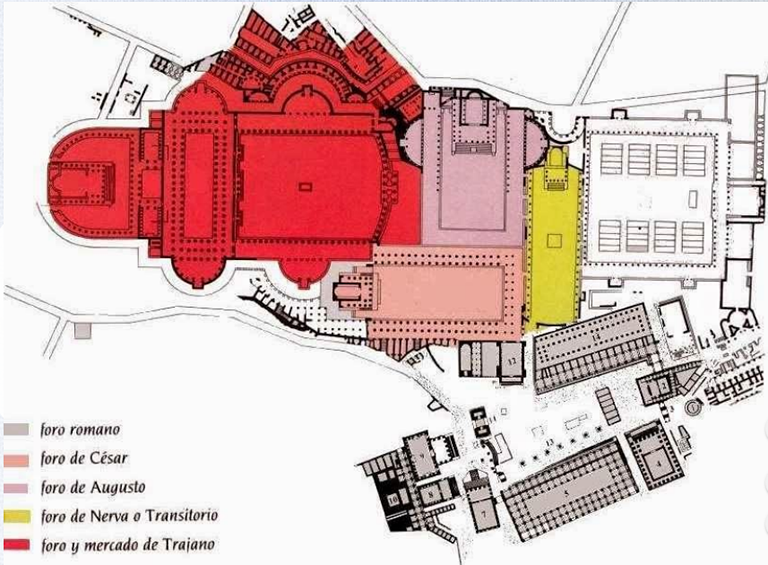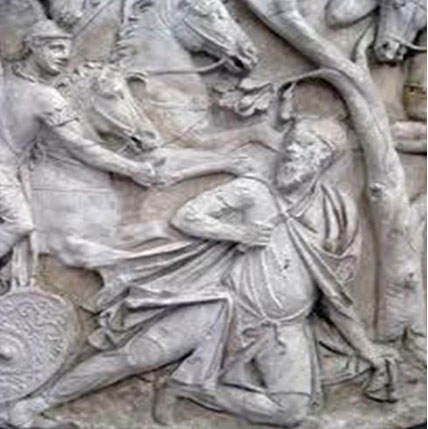
This column depicts Dacia's victory, enters the current area of Hungary and Romania, contains 155 scenes with 2,500 figures, and stands between the Greek and Latin library as if it were another book engraved in marble, tells of the fortifications of the engineers and the constructions of the Roman soldiers on the banks of the Danube, the assault on the cities, the burning of villages, the execution of prisoners, and the deportation of the barbarian tribes
.
Trajan, who in his lifetime received the title of "Optimal Prince", appears fifty times surrounded by his staff, instructing the army and offering sacrifices to the gods.
By means of the column of an imposing size (30 meters high), Trajan's qualities as a builder and as a victorious general of the divinized military power are highlighted, and an example of his power is the altitude of the architecture.
Apollodorus, Trajan's builder and friend, accompanied the emperor on his military expeditions, including the bridge over the Danube River, which Trajan used to fight the Dacians.
The purpose, besides being propagandistic, was also to house the ashes of the emperor and to show where the mountain displaced by the forum reached.
Under his rule (AD 98-117) the Roman Empire reached its peak. He organized the borders of the Rhine and the Danube and converted Dacia, Arabia, Armenia, Assyria and Mesopotamia into Roman provinces. Trajan's wars against the Dacians (101-106) were the main episode of his 19 years at the head of the Empire. He crossed the Danube over two of the longest bridges the ancient world has ever known and twice defeated a powerful barbarian empire in its own mountainous territory - today's Romania. Annihilating them without contemplation
Kneeling at the foot of an oak tree, Decebalus, king of Dacia, pierces his neck with a long, curved knife.
To commemorate the victory, and with the fabulous spoils captured in Dacia, Trajan had a forum built, the largest in Rome, so that the column was not conceived in isolation but as one more piece of a comprehensive urban reform entrusted by the emperor to Apollodorus of Damascus.
The whole had a large porticoed square (116x95) with exedras and with the equestrian statue of Trajan in its center; then a large basilica (104x52) with two apses, and after it two libraries and a temple. Between the libraries a patio (25x20) accommodated the column.







TRAJAN'S COLUMN
HISTORY











